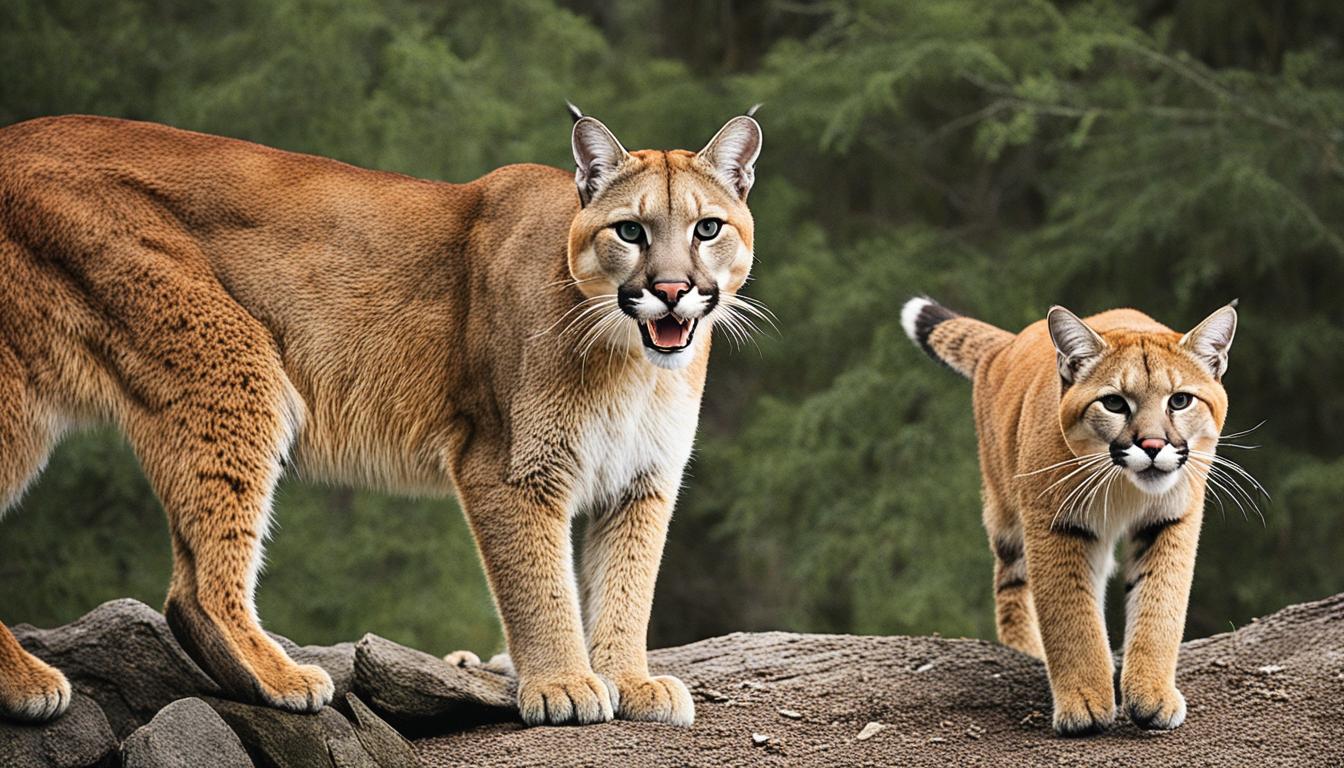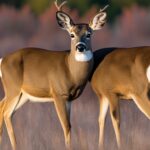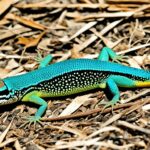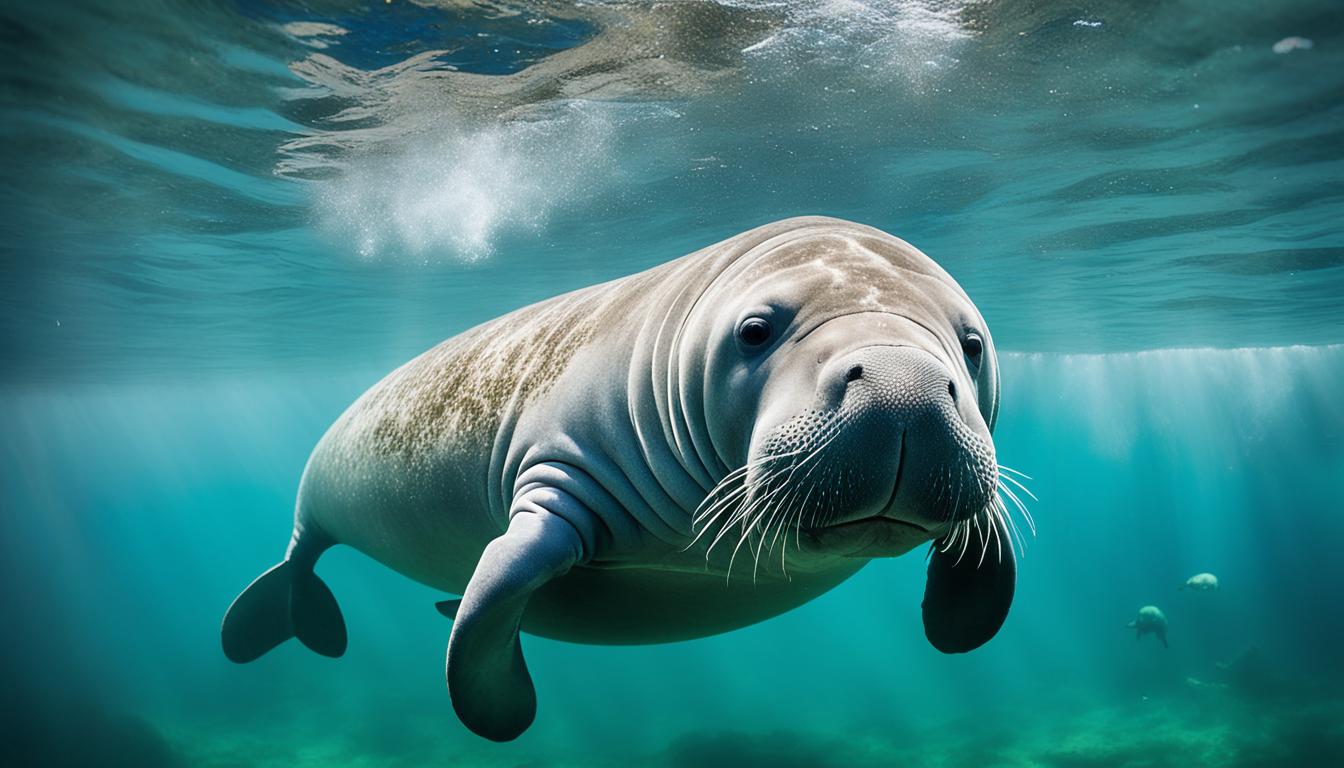Ever wondered how to tell a cougar from a bobcat? It’s important for nature lovers and folks living in their territory. Cougars and bobcats are similar but have clear differences. They vary in size, have different tails, markings, and eat different things. Knowing these differences helps you enjoy wildlife more safely and wisely.
Overview of Cougars and Bobcats
Cougars and bobcats come from the same big family, Felidae. This means they share similar features but have key distinctions. Knowing the cougar vs bobcat differences helps in telling them apart and understanding them better.
The Family Felidae
Both cougars and bobcats are skilled predators. They each have sharp claws and great senses. But they live in different places and show unique characteristics within the cat family.
Common Names
The cougar, also known as Puma concolor, goes by many names like mountain lion or panther. The bobcat, Lynx rufus, is often called a wildcat. The names can be confusing, especially for identifying cougar versus bobcat in various areas.
Physical and Behavioral Traits
Looking at cougars and bobcats’ traits can help in telling them apart:
- Size: Cougars are much bigger, with males reaching up to 180 pounds. Bobcats are smaller, usually topping out at 40 pounds.
- Coat Color: Cougars have a mostly solid coat in colors like tan or gray. Bobcats have a coat full of spots.
- Tail Length: Cougars have long, thick tails, but bobcats have short, “bobbed” tails.
- Hunting Behavior: Cougars hunt larger animals like deer, using their power. Bobcats go for smaller animals such as rabbits, thanks to their speed and smart hunting methods.
Size Differences: Cougar vs Bobcat
It’s important to know the size differences between a cougar and a bobcat for identifying them correctly. Even though they’re part of the same family, their sizes are very different.
Body Length
Cougars are much bigger than bobcats. They usually measure from 5 to 6 feet long, counting the tail. Bobcats are smaller, ranging from 2 to 4 feet long.
Weight Comparison
When it comes to weight, adult cougars can be up to 180 pounds. This shows how big and strong they are. Bobcats are much lighter, with a top weight of 40 pounds, falling into the smaller wildcat category.
Tail Length
Tail length is different for these wildcats too. Cougars have long, thick tails for balance. Bobcats, however, have short, ‘bobbed’ tails. This is a key way to tell their size apart.
| Feature | Cougar | Bobcat |
|---|---|---|
| Body Length | 5 to 6 feet | 2 to 4 feet |
| Weight | Up to 180 pounds | Up to 40 pounds |
| Tail Length | Long | Short (‘bobbed’) |
Markings and Coloration
When telling a cougar and a bobcat apart, their coat markings and color are key. Knowing these traits helps in making the right identification.
Coat Colors
Cougars have a solid coat, from light brown to gray. Bobcats, however, have a coat that is more mottled or spotted. Understanding these markings and coloration differences is vital for telling them apart.
Patterns and Spots
Bobcats stand out because they have spots on their coats. Dark spots or streaks on a bobcat show off its unique look. In contrast, cougars have a plain coat, not featuring any spots. This makes them easier to spot.
Ear and Tail Tips
Both cougars and bobcats might have black ear tips. But, bobcats have more obvious ear tufts. The tail is another clue—bobcats have short tails, while cougars’ tails are long. These details highlight the markings and coloration differences between the two.
How do you distinguish between a cougar and a bobcat?
Knowing how do you distinguish between a cougar and a bobcat is important when you meet these big cats. A major factor is their size. Cougars are a lot bigger than bobcats. They can weigh up to 180 pounds. Bobcats are much smaller, averaging 20-40 pounds.
Then, there’s their tail length. Cougars have long tails that can be almost as long as their whole body. But bobcats have short, bobbed tails that are easily spotted.
Color can give you a clue, too. Cougars have a solid color, usually light brown to gray. On the other hand, bobcats have unique fur that’s mottled, showing spots and streaks.
| Feature | Cougar | Bobcat |
|---|---|---|
| Size | Up to 180 pounds | 20-40 pounds |
| Tail Length | Long, up to one-third of body length | Short, “bobbed” |
| Coloration | Solid, light brown to gray | Mottled, with spots and streaks |
Other noticeable traits are ear tufts, seen in bobcats but not cougars. How they act also helps to tell them apart. Bobcats keep to themselves and stay away from people. Cougars are also shy but might venture closer to where humans live.
Watching for these signs carefully will make it easier to tell how do you distinguish between a cougar and a bobcat. It’s key for staying safe around these amazing but wild creatures.
Dietary Preferences
Looking at what cougars and bobcats eat helps us understand their roles in nature. We’ll dive into their food choices and how they hunt.
Cougar’s Diet
Cougars usually hunt and eat bigger animals like deer. But, they are also okay with catching and eating smaller animals when needed. This shows cougars can change what they eat depending on what’s available.
Bobcat’s Diet
Bobcats eat mostly smaller animals like rabbits and birds. They can catch bigger animals too, but their size makes hunting smaller prey more common. This big-small prey difference is key in understanding the cougar and bobcat diets.
Hunting Styles
Cougars are silent and strong, taking their prey by surprise with a swift attack. In comparison, bobcats are quick and crafty, choosing when and how to pounce. These styles highlight their ability to thrive using different strategies.
| Comparative Aspect | Cougar | Bobcat |
|---|---|---|
| Primary Diet | Larger prey like deer | Smaller prey such as rabbits, birds |
| Hunting Style | Stealth and power | Agility and opportunism |
| Dietary Flexibility | Generalist, may eat smaller animals | Focus on smaller animals |
Habitat and Range
It’s important to know where cougars and bobcats live to know where you might see them. They each like different habitats. Cougars have big territories but prefer places that are remote and wild. You can find them from western Canada to South America, usually in mountains, deep forests, and places far from people.
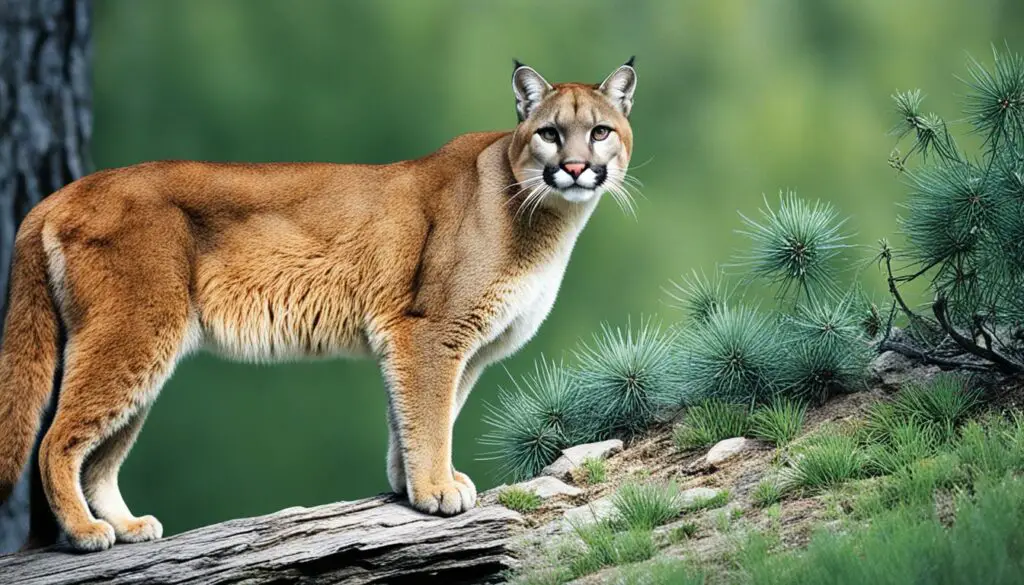
Cougar’s Habitat
Cougars are known for roaming large areas. They like remote and rugged places from western Canada to South America. Because they avoid people, you can usually find them in mountains, deep forests, and areas without much human activity.
Bobcat’s Habitat
Bobcats, on the other hand, can live in various places more easily than cougars. They are mostly found in North America. Bobcats thrive in different environments, like outcrops, canyons, and sometimes even close to humans. Their ability to live in many different areas allows them to have a wider range.
Geographical Range
Cougars have a much larger area to roam compared to bobcats, covering the whole Americas. In contrast, bobcats are mainly found in North America. Cougars prefer wild and inaccessible lands while bobcats are more adaptable, living in various environments, sometimes close to humans. This distinction is key to knowing where you might find each species.
| Criteria | Cougar’s Habitat | Bobcat’s Habitat |
|---|---|---|
| Preferred Terrain | Remote, rugged | Diverse, adaptable |
| Geographical Range | Western Canada to South America | Primarily North America |
| Human Proximity | Avoids human settlements | Adapts to areas near humans |
Behavioral Characteristics
It’s crucial to understand how cougars and bobcats behave. This knowledge helps keep people safe in wild areas. We look at their aggression, activity patterns, and how they interact with humans to get important info.
Aggression and Timidity
Cougars can be very aggressive, especially if they feel threatened or protecting their area. Their boldness may even lead them to approach people. It’s important to be very careful around them. In contrast, bobcats are usually timid and try to avoid humans. They might get aggressive only if someone provokes them. Knowing these differences is key to staying safe around these animals.
Activity Patterns
Cougars are most active at dawn and dusk, making them crepuscular. Bobcats are more flexible, hunting whenever prey is available. They might avoid people by changing their hunting times. Understanding these patterns helps us tell the two big cats apart.
Human Interaction
Cougars pose more danger to people, especially as they move closer for food. This could lead to unwanted encounters. Bobcats, on the other hand, usually steer clear of humans. Seeing them is rare, and you might just find tracks or signs they’ve been around. Learning about their interaction with humans is crucial for living alongside them.
| Aspect | Cougar | Bobcat |
|---|---|---|
| Aggression vs. Timidity | Aggressive, may approach humans | Timid, avoids human contact |
| Activity Patterns | Crepuscular (dawn and dusk) | Flexible, day or night |
| Human Interaction | Higher risk, closer to human habitats | Elusive, rare interactions |
Physical Features to Note
When trying to tell a cougar and a bobcat apart, look at their physical features. The biggest difference is their tails. Cougars have long tails, almost a third of their body length. But bobcats have short, ‘bobbed’ tails, usually less than 6 inches long.
Their coat colors and patterns also help in telling them apart. Cougars have coats that are mostly the same color, from light brown to gray. But bobcats’ coats have spots and little patches, which help them hide.
Size and shape matter too. Cougars are much bigger, with strong, big bodies. They can be up to 6 feet long and weigh as much as 180 pounds. On the other hand, bobcats are smaller, not usually heavier than 40 pounds. They are built to be more agile and have tufts on their ears instead of the rounded ears cougars have.

